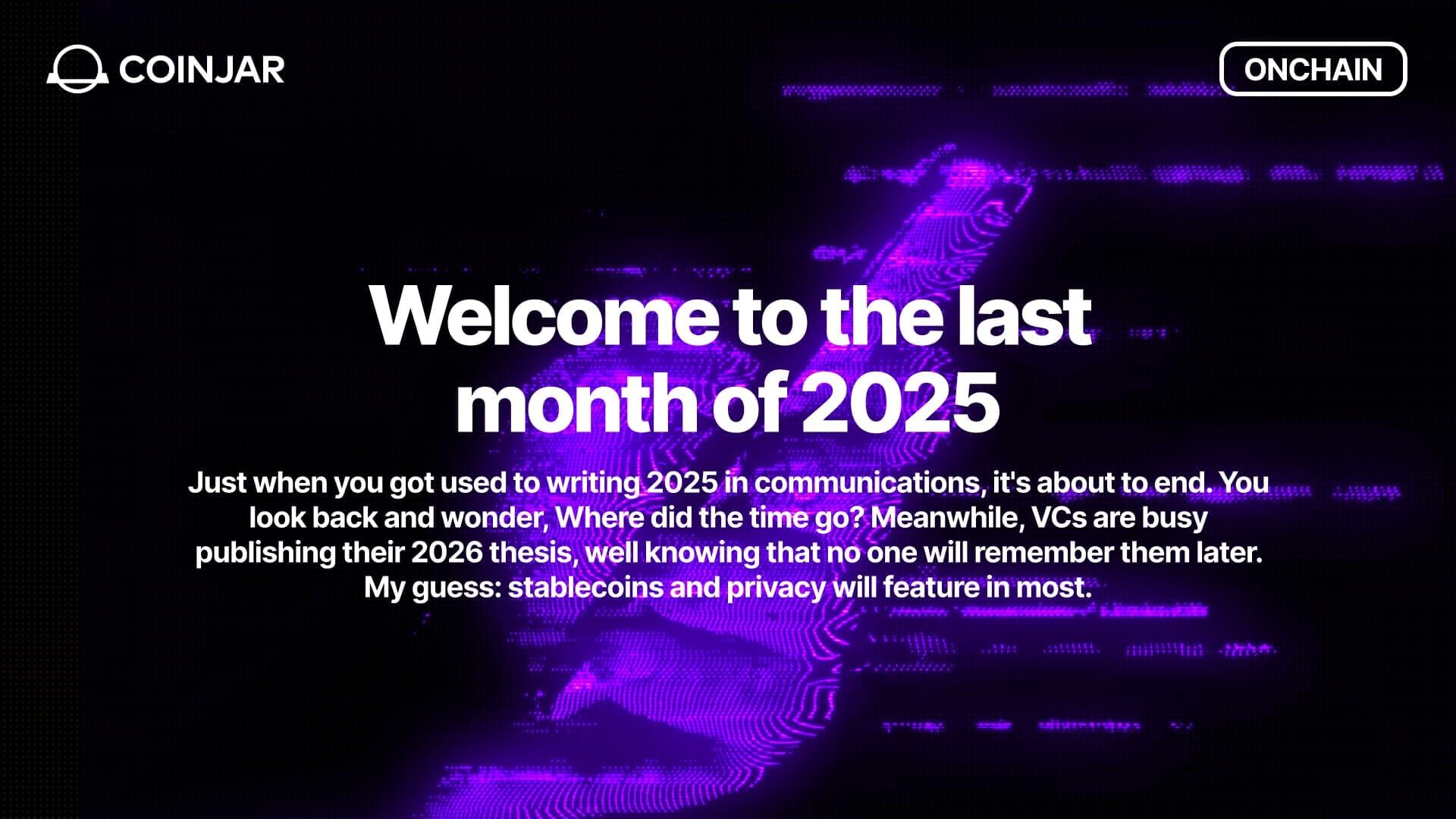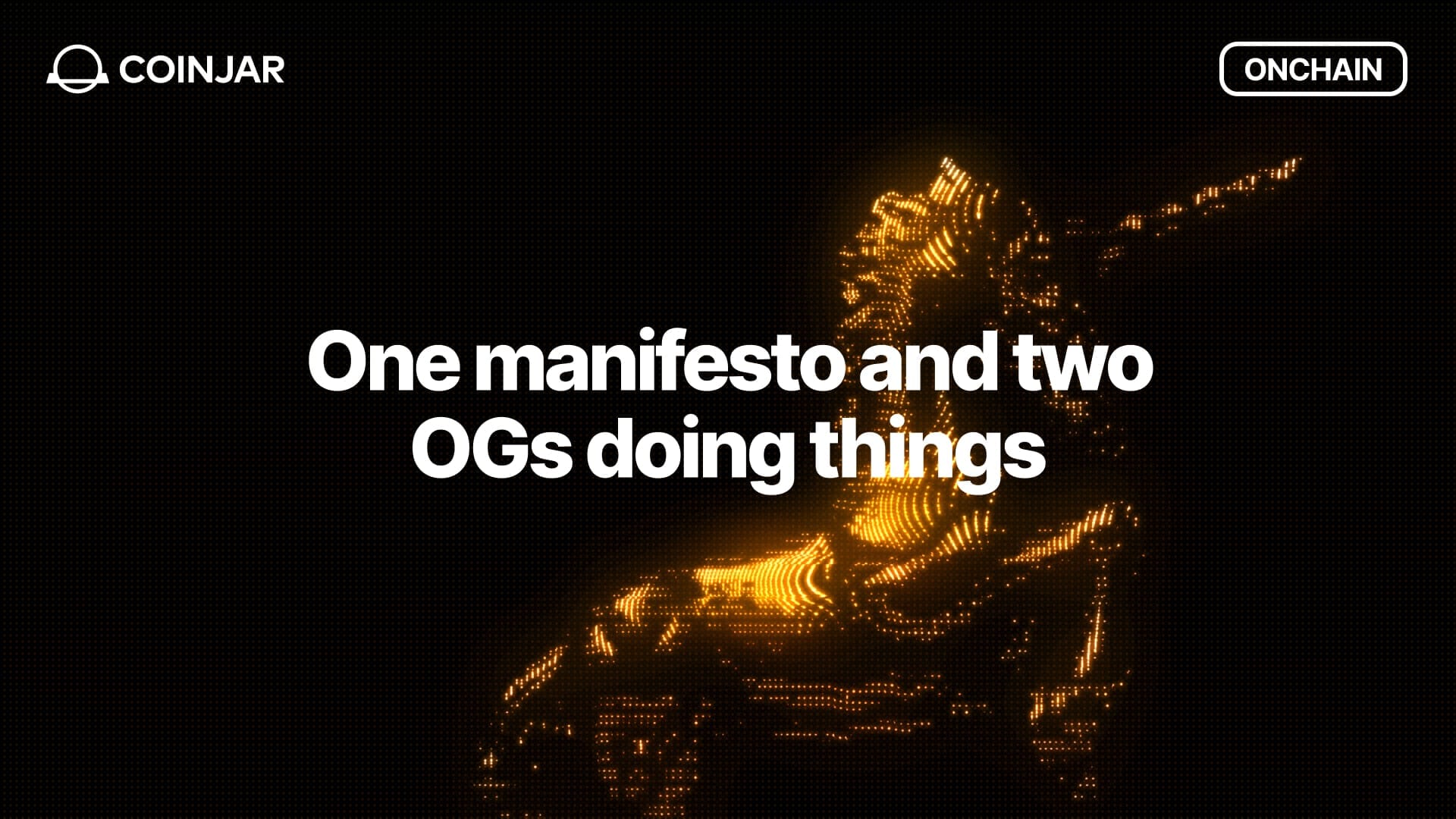Get $20 in free Bitcoin when you sign up and buy $50+ in crypto before January 31, 2026. Terms apply.
Onchain: Things are going just great
March 27, 2024
Share this:

That's if all you care about are numbers and cheap engagement.
Story One
EU banning anonymous wallets?!
At least, that was the tenor from Crypto Twitter over the weekend after seeing that the EU was about to introduce further regulation. As so often, rumors spread far and wide, with publications like Cointelegraph reporting that this would mean people cannot send more than 1k euros to self-hosted wallets without additional identity checks. Or, to put it as they did, "The EU is banning self-custodial wallets."
Sorry to break crypto's solipsism, but we're not all that important. The new laws are a broad initiative to reign in financial crime. Had any of the people bothered to check the source, they'd quickly have found that the restrictions on transfers are limited to crypto asset service providers. What's more, the draft even explicitly excluded software or hardware wallets from the prohibitions.
The regulations are expected to be fully operational within the next 3 years after receiving approval from the council and parliament. That's another 107 crypto cycles in which we'll probably not learn to check our sources.

Takeaway: As my high school teacher used to say, "Who reads has a clear advantage." On that note, congrats to you, dear reader. You engage in an activity that 90% of CT users lack the attention span for. 👏
Story Two
Base suffers from success.
The Layer 2 launched by Coinbase has seen its TVL double in a month, driven by the price of native memecoins like $DEGEN and influencers suddenly discovering it as the new hot narrative.

As another symptom of success, Base has seen its first large rug in the last week. On March 16th, an anon team raised 877 ETH for its $Ticker token, aided by the credibility of PartyDAO, a platform to launch tokens for communities. Unfortunately, instead of executing an airdrop with funds as he was supposed to, their dev, Jolan, decided to steal the funds and buy Miladys and memecoins—a man of culture.
After being exposed on Twitter by ZachXBT, the dev said he regretted nothing and went ahead to call people who had sent money to a custodial address morons. He also advised them to touch grass. Overall, not terrible advice.
PartyDAO was quick to distance itself from such advice, clarifying that the token and sale were created entirely outside of their protocol and that, usually, the default setting was for members to control funds. Ticker circumvented that by setting the creator split to 90%.
Takeaway: A 90% split for creators could have raised some eyebrows, but then again, who can be bothered with due diligence? One thing is clear: any ecosystem that attracts liquidity will eventually see its fair share of rugs.
Story Three
Polygon zkEVM dead or alive?
Another thing that didn't go so great last weekend was Polygon's zkEVM. Maybe, unlike CT, the sequencer read the news and was so shocked when he realized that Starbucks was ending its Polygon NFT program that he needed a break.
But then again, despite the advances in machine intelligence, we're nowhere near machines actually understanding. So, what happened? The sequencer is a piece of infrastructure that connects Layer 2s with Ethereum and is responsible for ordering and submitting batches of transactions. For most L-2s, Polygon zkEVM included, it's a centralized sequencer, which means that if the one sequencer goes down, nothing works.
The good news for people prone to getting rugged is that for the 10 hours that the sequencer was down, they could have touched grass without risking losing funds.
Takeaway: Interestingly, barely anyone on Crypto Twitter seemed to be talking about this downtime. Once again, crypto people have proven masters of cognitive dissonance. They preach decentralization and happily rely on centralized sequencers. We're not so different from chain-smoking doctors, y'all.

Fact of the week: Speaking of reading, to save you from future embarrassment, let it be known that even though people like to talk about Frankenstein when referring to the monster, the monster in the novel never had a name. Dr. Frankenstein is the person who created it.
Naomi for CoinJar
The above article is not to be read as investment, legal or tax advice and takes no account of particular personal or market circumstances; all readers should seek independent investment, legal and tax advice before investing in cryptocurrencies. This article is provided for general information and educational purposes only. No responsibility or liability is accepted for any errors of fact or omission expressed therein. CoinJar, Inc. makes no representation or warranty of any kind, express or implied, regarding the accuracy, validity, reliability, availability, or completeness of any such information. Past performance is not a reliable indicator of future results.
Share this:
On/Offchain
Your weekly dose of crypto news & opinion.
Join more than 150,000 subscribers to CoinJar's crypto newsletter.
Your information is handled in accordance with CoinJar’s Privacy Policy.
More from CoinJar Blog

Onchain: Welcome to the last month of 2025
December 3, 2025Just when you get used to writing 2025 in communications, it's about to end. You look back and wonder, Where did the time go? Meanwhile, VCs are busy publishing their 2026...Read more
Onchain: One manifesto and two OGs doing things
November 19, 2025Story One Wake up babe, new manifesto dropped Why ship app, when you can write manifestos instead, amirite? Or so the Ethereum Foundation & Co. must have thought as they sat...Read more
Onchain: It's getting dark out there
November 5, 2025Not just because of wintertime and crypto coins going down, but also because bad things keep happening in our industry. Before that, here's one positive sign. Story One x402...Read moreYour information is handled in accordance with CoinJar’s Privacy Policy.
Copyright © 2025 CoinJar, Inc. All rights reserved.
CoinJar, Inc. is a registered Money Services Business with FinCEN and licensed as a money transmitter, NMLS #2492913. For a list of states in which CoinJar, Inc. is licensed or authorized to operate, please visit here. In certain other states, money transmission services are provided by Cross River Bank, Member FDIC.
This site is protected by reCAPTCHA and the Google Privacy Policy and Terms of Service apply.